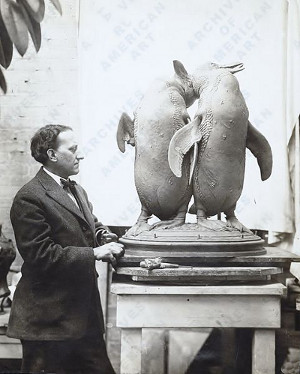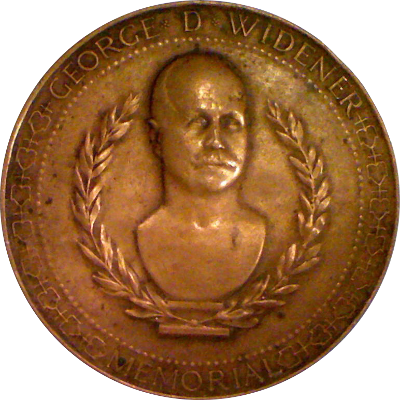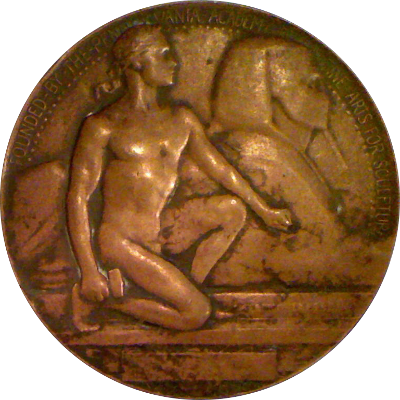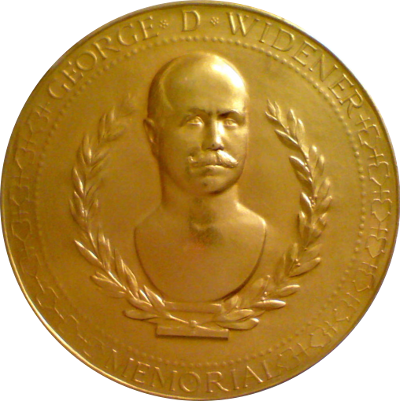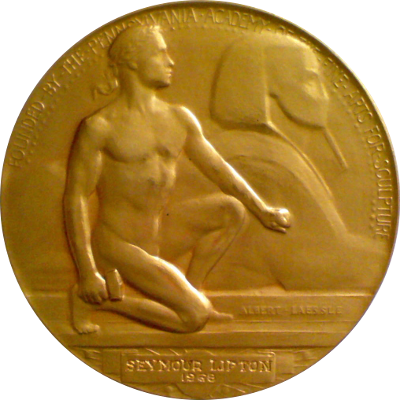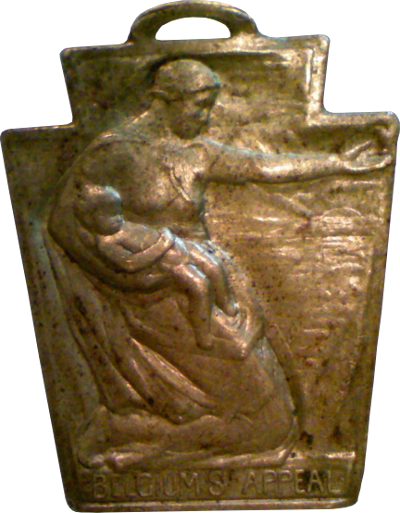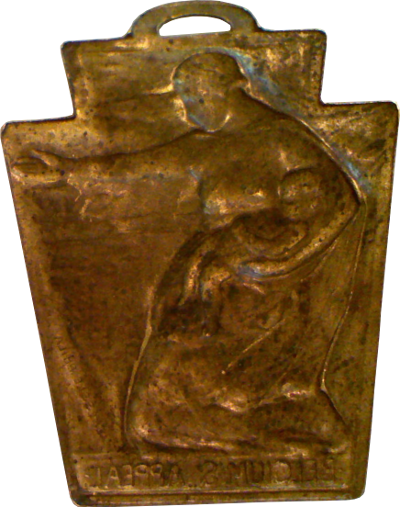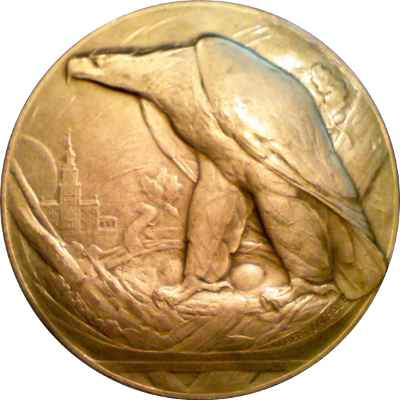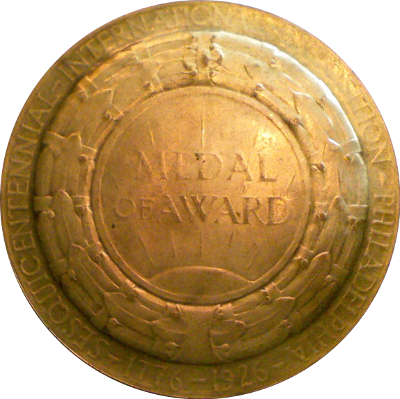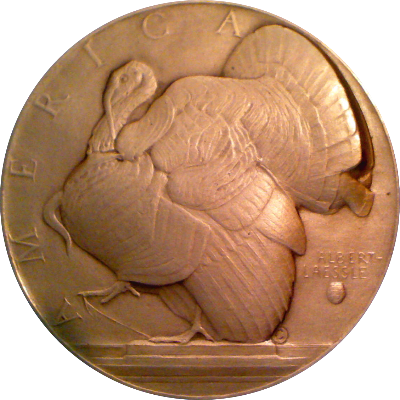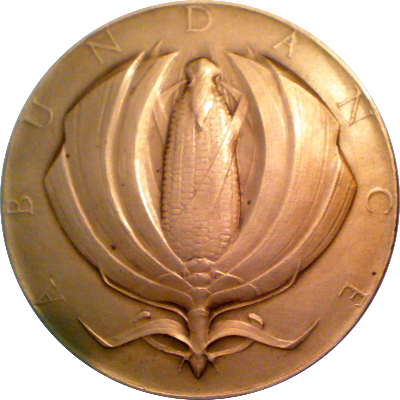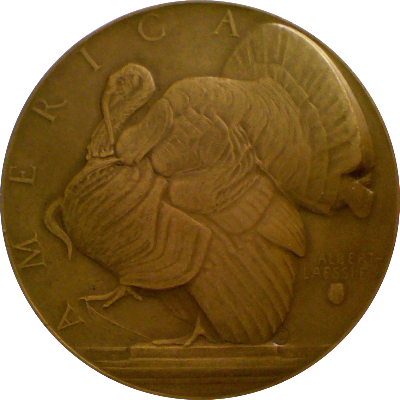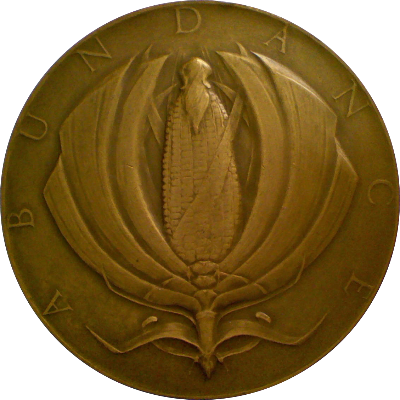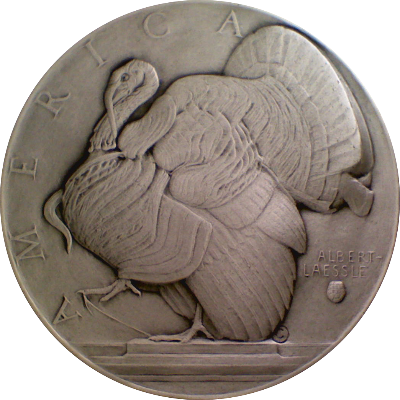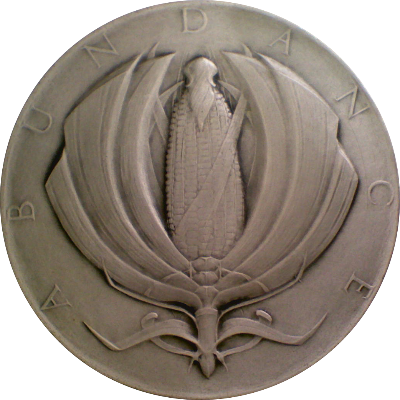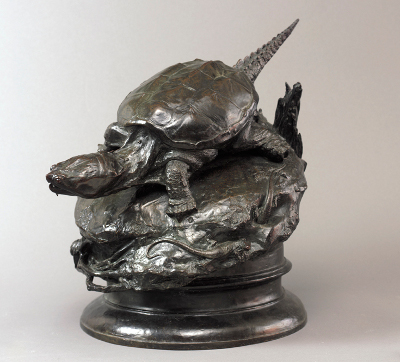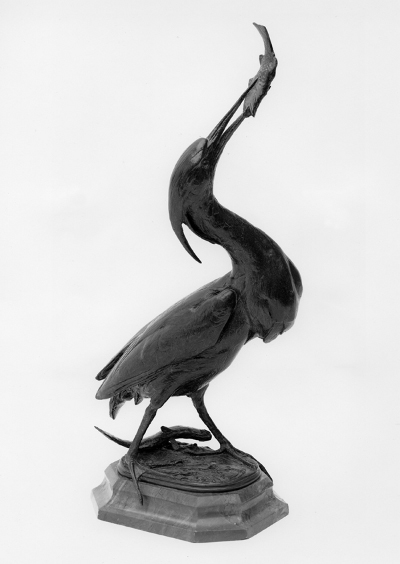Albert Laessle was born as the younger of two brothers in Philadelphia, Pennsylvania in 1877. His parents were immigrants from Germany and he came by his sculptural inclinations honestly: his father was a wheelright and woodcarver and a grandfather had been a stonecutter. Despite the family background in crafts Albert Laessle's parents were not supportive of a career in the arts. After finishing public school in Philadeplhia his parents refused to support him in pursuing further education in art school. Luckily, his older brother Henry continued to encourage and financially support him. This allowed Albert to attend the Spring Garden Institute in 1894. He went on to attend the Drexel Institute (now Drexel University) in Philadelphia and later studied under Thomas Anshutz and Charles Grafly at the Pennsylvania Academy from which he graduated in 1904.
While studying with Grafly, Laessle created a now lost portrait of an East Indian and his famous Turtle and Crab. The latter was sculpted so lifelike that he was accused of having cast rather than modeled it. Rather than fighting the allegation and defending his chance for a gold medal, he remained quiet. His opponents' triumph was short-lived though because he immediately went on to create an equally realistic turtle sculpture out of wax, wax of course being a material that can not be cast. As a result, he immediately went from infamous to famous. Turtle and Lizards (1902-03) is apparently similar and from the same period.
Laessle received the Cresson Traveling Scholarship from the Pennsylvania Academy and spent three years in Paris, working with Michel Beguine. In preparation for his trip, Laessle studied anatomy, life drawing, and still-life painting, and also modeled portrait heads. In 1907, he returned to Philadelphia and worked in Grafly's studio. Laessle had gotten married and when he and his wife Mary needed a place to live, they bought a house and studio in the Philadelphia suburb of Germantown. It was there that the sculptor worked for many years.
Laessle's specialty was small animal sculpture, something Grafly had introduced him to. Among his public commissions were a group of bronze penguins for the Philadelphia Zoo, Brookgreen Gardens and elsewhere, and a group of animals in Johnson Square, Camden, New Jersey. He designed the Pennsylvania Academy's George D. Widener Gold Medal; a fountain for the Philadelphia Zoological Gardens; and a number of sculptures for Victor Talking Machine Company, including the famous listening dog which became the company's logo under the title, His Master's Voice. Laessle designed the award medal for the 1926 Independence Sesqui-Centennial Exposition in Philadelphia and subsequently won his own medal in gold. In 1927, he was asked to complete Grafly's The General Galusha Pennypacker Memorial for the city of Philadelphia, a project which occupied Laessle for five years and which proved to be the largest project of his career. His own bust of Grafly (1928) is in the collection of National Institute of Arts and Letters, New York. Laessle exhibited many of his animal sculptures as well as other works at the National Academy beginning in 1908. He was a member of the National Sculpture Society and the National Institute of Arts and Letters.
After the death of his first wife Mary in 1944 he moved to Florida where he spent the last ten years of his life. He got married a second time (to Albertine C. De Bempt) and died in 1954.
Sourced mainly from the Wikipedia, the National Academy, the National Museum of Wildlife Art.
